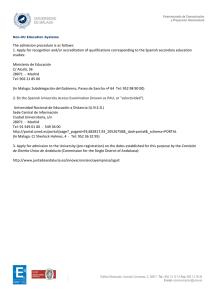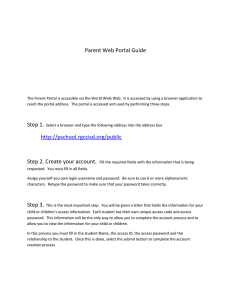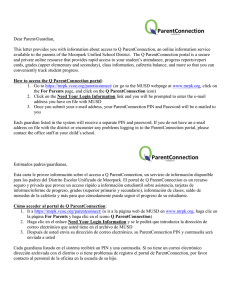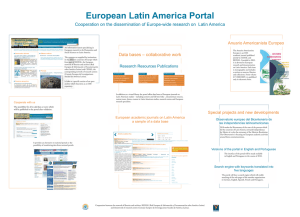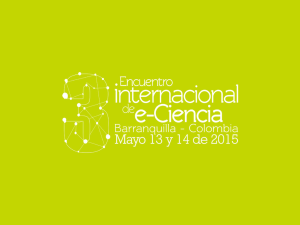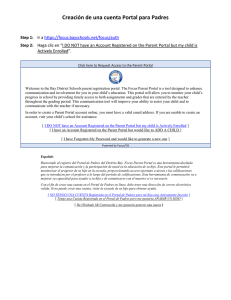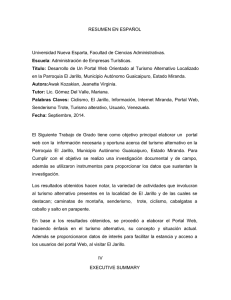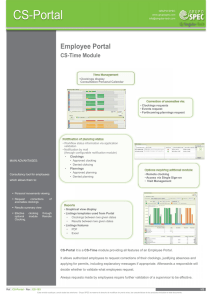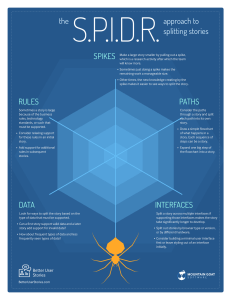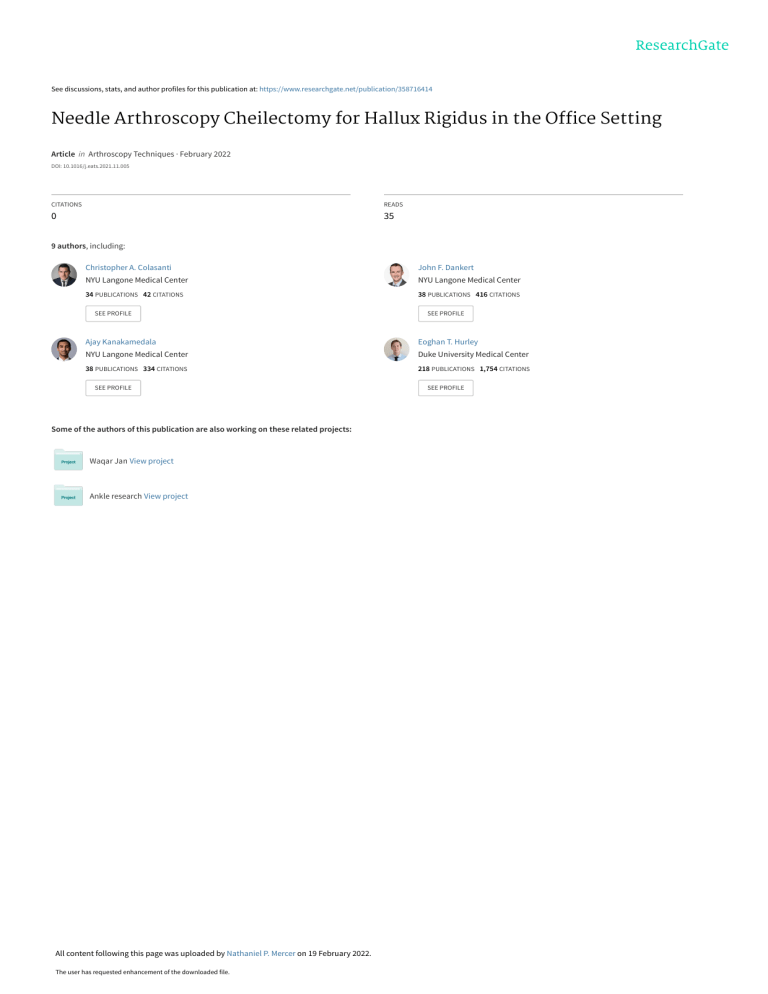
See discussions, stats, and author profiles for this publication at: https://www.researchgate.net/publication/358716414 Needle Arthroscopy Cheilectomy for Hallux Rigidus in the Office Setting Article in Arthroscopy Techniques · February 2022 DOI: 10.1016/j.eats.2021.11.005 CITATIONS READS 0 35 9 authors, including: Christopher A. Colasanti John F. Dankert NYU Langone Medical Center NYU Langone Medical Center 34 PUBLICATIONS 42 CITATIONS 38 PUBLICATIONS 416 CITATIONS SEE PROFILE SEE PROFILE Ajay Kanakamedala Eoghan T. Hurley NYU Langone Medical Center Duke University Medical Center 38 PUBLICATIONS 334 CITATIONS 218 PUBLICATIONS 1,754 CITATIONS SEE PROFILE Some of the authors of this publication are also working on these related projects: Waqar Jan View project Ankle research View project All content following this page was uploaded by Nathaniel P. Mercer on 19 February 2022. The user has requested enhancement of the downloaded file. SEE PROFILE Technical Note Needle Arthroscopy Cheilectomy for Hallux Rigidus in the Office Setting Daniel J. Kaplan, M.D., Jeffrey S. Chen, M.D., Christopher A. Colasanti, M.D., John F. Dankert, M.D., Ph.D., Ajay Kanakamedala, M.D., Eoghan T. Hurley, M.B., B.Ch., M.Ch., Nathaniel P. Mercer, M.S., James W. Stone, M.D., and John G. Kennedy, M.D., M.Ch., M.M.Sc., F.F.S.E.M., F.R.C.S. (Orth) Abstract: Hallux rigidus is a progressive degenerative process of the first metatarsophalangeal joint characterized by altered joint mechanics and formation of dorsal osteophytes. Cheilectomy is the preferred operative intervention at early stages. Technologic advances, patient preference, and cost considerations combine to stimulate the development of minimally invasive and in-office interventions. This Technical Note highlights our technique for needle arthroscopy cheilectomy for hallux rigidus, which can be used either in the operating room or in the wide-awake office setting. D egenerative arthritis of the first metatarsophalangeal (MTP) joint, also known as hallux rigidus, is the most common degenerative condition of the foot. Although arthritis can be traumatic or iatrogenic in origin, the condition is more commonly idiopathic, with almost two-thirds of patients having a positive family history and 79% of patients having bilateral MTP involvement.1 As the condition progresses, altered joint mechanics lead to eccentric gliding of the proximal phalanx on the metatarsal head, leading to osteophyte formation preferentially on the dorsal aspect of the joint.2 This is accompanied by a corresponding decrease in range of motion, with pain in midrange motion at advanced stages. From NYU Langone Health, NYU Langone Orthopedic Hospital, New York, New York, U.S.A. (D.J.K., J.S.C., C.A.C., J.F.D., A.K., E.T.H., N.P.M., J.G.K.); and the Medical College of Wisconsin, Milwaukee, Wisconsin, U.S.A. (J.W.S.) The authors report the following potential conflicts of interest or sources of funding: J.G.K. reports other, Isto Biologics, Arthrex; board or committee member, American Orthopaedic Foot and Ankle Society, Arthroscopy Association of North America, European Society for Sports Traumatology, Knee Surgery and Arthroscopy, Ankle and Foot Associates, International Society for Cartilage Repair of the Ankle. J.W.S. reports board or committee member, Arthroscopy Association of North America. Full ICMJE author disclosure forms are available for this article online, as supplementary material. Received September 18, 2021; accepted November 8, 2021. Address correspondence to John G. Kennedy, M.D., M.Ch., M.M.Sc., F.F.S.E.M., F.R.C.S. (Orth) NYU Langone Health, NYU Langone Orthopedic Hospital, New York, NY, U.S.A. Ó 2021 Published by Elsevier Inc. on behalf of the Arthroscopy Association of North America. This is an open access article under the CC BY-NC-ND license (http://creativecommons.org/licenses/by-nc-nd/4.0/). 2212-6287/211337 https://doi.org/10.1016/j.eats.2021.11.005 Arthroscopy Techniques, Vol -, Initial management of hallux rigidus is focused on nonoperative treatment and includes anti-inflammatory medication, orthotics, and intra-articular injections. Operative treatments range from debridement and cheilectomy for early-stage hallux rigidus to osteotomy, joint resection, interposition, arthroplasty prosthetic arthroplasty, and arthrodesis for severe disease. Cheilectomy is the preferred option for early stages of hallux rigidus, specifically in patients with primarily dorsal-based symptoms, a dorsal osteophyte with impingement, and minimal to mild joint space narrowing.3 Cheilectomy is traditionally done through an open approach, although minimally invasive and arthroscopic techniques have also been described.4 Recent advancements in needle arthroscopy, including chip-on-tip image sensor technology, have pushed the boundaries of minimally invasive surgery. Indications and contraindications for needle arthroscopy can be found in Table 1. This Technical Note Table 1. Indications and contraindications Indications Symptoms for >6 months Dorsal-based symptoms Pain at extremes of motion Mild to moderate: <50% joint space narrowing Radiographic evidence of dorsal osteophyte Failure of conservative treatment No - (Month), 2021: pp e1-e6 Contraindications Pain at midrange of motion Severe: >50% joint space narrowing Joint malalignment necessitating osteotomy Large osteophyte preventing adequate visualization of joint Soft tissue compromise Poor vascular status e1 e2 D. J. KAPLAN ET AL. Table 2. Pearls and pitfalls Pearls Pitfalls Thorough history and physical to avoid performing procedure on patients with severe hallux rigidus Comprehensive discussion with patients regarding expectations for wide-awake procedure Gentle traction as necessary to open joint space and facilitate access to the joint Careful placement of the dorsolateral portal to obtain optimal positioning for bur Creating direct medial portal distally for proper visualization of lateral aspect of convex metatarsal head Traction can be released after joint is accessed to loosen joint capsule and facilitate access to dorsal osteophyte Failure to provide adequate preprocedural local anesthesia or adequate time for anesthesia to take effect Incorrect portal placement, causing iatrogenic cutaneous nerve injury Inadvertent iatrogenic damage to articular cartilage from trochar Placement of dorsolateral portal too medially may limit ability of bur to resect laterally Inadequate resection from failure to properly visualize entire metatarsal head Transient neuropraxia cased by excessive hallucal traction or traction by instruments Table 3. Step-by-Step Guide to Performing the Proposed Technique Step 1: Position the patient comfortably in the supine position with the operative foot free. Mark out relevant surface anatomy and anticipated portals. Step 2: Deliver intra-articular block to the metatarsophalangeal joint. If additional anesthesia is necessary, consider an ankle block or digital nerve blocks. Step 3: Establish dorsomedial and dorsolateral portals with a superficial stab incision followed by blunt dissection. Step 4: Perform diagnostic arthroscopy with systematic examination of anatomic structures. Step 5: Establish the direct medial portal under direct visualization in a similar fashion, cheating the portal distally to facilitate visualization of the convex metatarsal head. Switch the viewing portal to the direct medial portal. Step 6: Using a minimally invasive high-speed bur, perform a controlled, gentle excision of dorsal osteophyte and dorsal metatarsal head using the dorsolateral and dorsomedial portals. Step 7: Assess status of resection with fluoroscopy and passive range of motion. Resection is complete when 10% of the dorsal aspect of the metatarsal head is resected or when 40 to 70 of dorsiflexion is obtained. Step 8: Apply wound closure and soft dressing or splint as indicated. Fig 1. The equipment for the procedure is organized on a Mayo stand draped in a sterile fashion. NEEDLE ARTHROSCOPY CHEILECTOMY IN THE OFFICE e3 Fig 2. Preoperative fluoroscopy images of a right foot, demonstrating early stages of hallux rigidus, including a dorsal osteophyte with impingement and minimal to mild joint space narrowing. highlights our technique for needle-arthroscopy cheilectomy for hallux rigidus, which can be used either in the operating room or in the wide-awake office setting (Video). We recommend keeping in mind the advantages, disadvantages, and potential downsides when considering needle arthroscopy for a patient (Table 2) and include a step-by-step guide to performing the technique (Table 3). Surgical Technique Preoperative Planning/Positioning A thorough history and physical examination are conducted. Patients frequently complain of pain of the first ray and MTP with push-off or terminal dorsiflexion of the great toe. The MTP joint should be isolated and brought through range of motion, taking care to note whether the patient has pain at extremes of motion, midrange motion, or both. The equipment for the procedure is organized on a Mayo stand draped in a sterile fashion (Fig. 1). Plain radiographs of the affected foot should be obtained to identify the presence of dorsal osteophytes and evaluate the joint space (Fig. 2). If the patient is a candidate for cheilectomy, an approximate bony resection should be planned, with the goal of removing w10% of the dorsal aspect of the metatarsal head along with the osteophyte. The patient is seated comfortably on an examination table in the supine position, with the foot at the edge of the bed. The relevant surface anatomy is marked out on the foot, including the metatarsal head and base of the proximal phalanx, as well as the portal sites (Fig. 3). Additionally, the medial dorsal cutaneous nerve (MDCN) and the medial plantar proper digital (medial plantar hallucal) nerve (MPPDN) are noted if visible subcutaneously. An intra-articular block consisting of 5 mL of 2% lidocaine and 0.5% bupivacaine in a 1:1 ratio is delivered to the MTP joint. Fluoroscopy can be used to assist in joint localization. Optionally, additional anesthesia may be provided in the form of an ankle block or digital nerve blocks. The patient is then prepped and draped in a sterile fashion with the patient’s head exposed so that they can observe the procedure if they desire. The patient wears a surgical mask. Traction can be applied to the great toe as necessary, with a finger trap, a looped sterile gauze roll, or manual traction by an assistant (Fig. 4). If this procedure is performed in a formal operating room under general anesthesia or sedation, then traction can also be applied with a specialized e4 D. J. KAPLAN ET AL. Fig 3. Right foot demonstrating relevant surface markings in preparation for needle arthroscopy, including proximal phalanx, metatarsal head, extensor tendon, direct medial portal, dorsomedial portal, and lateral portals. Diagnostic arthroscopy is conducted using the dorsomedial and dorsolateral portals. The joint should be systematically examined including visualization of the metatarsal head, base of the proximal phalanx, medial and lateral gutters, joint capsule and its reflections (Fig. 5). Once the examination is complete, the direct medial portal is created overlying the MTP joint, under direct visualization from the dorsolateral portal, with care to avoid the MDCN dorsally and the MPPDN plantarly. Given the convexity of the metatarsal head, we prefer to place this portal distally to allow adequate visualization of the lateral aspect of the metatarsal head. The trocar and arthroscope are then switched to the medial portal, and the dorsal osteophyte is visualized. A 3-mm bur is best used in the awake-patient setting. This can be alternated with periods of flushing and suctioning the joint with saline to prevent clouding of the field with bone debris. If the procedure is performed in the operating room, K-wires can also be placed, using fluoroscopy to guide the amount of necessary resection. A 2.0- by 8-mm high-speed bur (Minimally Invasive Surgery Percutaneous Bur; Arthrex) is inserted into the dorsolateral portal and used for a gentle, controlled excision of the distractor using Kirschner wires (K-wires) inserted in the metatarsal shaft and proximal phalanx. Portal Placement Proper portal placement is essential to ensure adequate visualization and positioning for cheilectomy. Three portals are made: dorsomedial, dorsolateral, and direct medial. In contrast to previously described techniques for first MTP arthroscopy, our technique uses the direct medial portal as the primary viewing portal and the dorsolateral portal as the primary instrumentation portal. This arrangement accommodates the viewing angle provided by the 1.9-mm 0 needle arthroscope (NanoScope; Arthrex, Naples, FL). The dorsomedial portal is used to assist in subsequent portal establishment under direct visualization as well as to complete the diagnostic arthroscopy. Operative Technique The dorsomedial portal is established over the MTP using a no. 11 blade w5 mm medial to the extensor tendon, followed by blunt dissection with a hemostat to the joint capsule. Fluoroscopy can be used to assist in joint localization. A blunt trocar is inserted into the joint through the dorsomedial portal, followed by the needle arthroscope. Blunt dissection can be done with the trocar to clear soft tissue, with care to avoid damaging the articular cartilage. The dorsolateral portal is then established 5 mm lateral to the extensor tendon under direct visualization, with care to avoid the dorsal lateral cutaneous nerve. Fig 4. Surface view of right foot with relevant surface markings, demonstrating traction of the great toe with a looped sterile gauze roll. Joint distraction is integral for intraarticular anesthetic block. NEEDLE ARTHROSCOPY CHEILECTOMY IN THE OFFICE Fig 5. Diagnostic arthroscopic image viewing from the dorsomedial portal of right foot. The dorsomedial portal is made first with a no. 11 blade, followed by blunt dissection, and then nanoscope insertion. This image viewed from the dorsomedial portal of the right foot demonstrates the base of the proximal phalanx, metatarsal head, and lateral accessory collateral ligament. dorsal osteophyte (Fig. 6). Instruments can be switched to the dorsomedial portal to aid in complete resection. Resection is complete when 10% of the dorsal aspect of the metatarsal head is resected, or when 40 to 70 of dorsiflexion is obtained (Fig. 7; Video 1). Portals can be sealed primarily using adhesive wound closure strips (Steri-Strip; 3M, Saint Paul, MN) or simple Nylon sutures. Clean sterile dressings are applied. e5 accommodate the 0 fisheye view provided by the 1.9-mm chip-on-tip arthroscope. This offers excellent visualization of both the metatarsal head and the instruments from the dorsal portals. Because the portals are just 2 mm in size, an additional portal does not add substantially to soft tissue trauma. The literature regarding small joint arthroscopy is limited. Iqbal and Chana7 reported on a series of 15 patients who underwent arthroscopic cheilectomy using a 2.7-mm 30 arthroscope and a 3.5-mm shaver, with a mean follow-up of 9.4 months. Ten patients (66.7%) experienced full relief of pain. Dorsiflexion improved from a mean of 7.4 preoperatively to 47.6 postoperatively, and all patients were either satisfied or very satisfied with the procedure.7 van Dijk et al.8 reported on a series of 12 patients who underwent arthroscopic cheilectomy using a 2.7-mm 30 arthroscope with a minimum follow-up of 2 years; 8 patients (66.7%) had good or excellent results. Long-term follow-up and prospective data are lacking. The advantages of this minimally invasive technique include better cosmesis, reduced wound complications, reduced anesthesia complications, and faster recovery. More importantly, needle arthroscopy allows patients to undergo a diagnostic and therapeutic procedure in the office setting and actively participate in the understanding of their condition. It also allows for savings in health care costs consisting of operating room time, staff, anesthesia, and equipment. As technology advances and the demand for minimally invasive and Postoperative Protocol Postoperatively, the patient is allowed to mobilize with full weightbearing as tolerated using a rigid post-operative shoe. Early passive range-of-motion exercises of the first MTP are encouraged. The patient is transitioned to a regular shoe at w2 weeks or when tolerated, as dictated by pain and swelling. Driving is prohibited for the first 2 weeks. Formal physiotherapy is usually not required. Discussion Hallux rigidus is a debilitating condition that is amenable to cheilectomy in its early stages. This is traditionally done through an open or mini-open approach. Arthroscopic cheilectomy techniques using small joint arthroscopes (most commonly 2.7-mm 30 arthroscopes) have been described and frequently use a dual-portal technique through the dorsomedial and dorsolateral portals.4-6 In our technique, we use a third direct medial portal as a primary viewing portal to Fig 6. Arthroscopic image of right foot from the direct medial portal, demonstrating use of the Minimally Invasive Surgery bur inserted from the dorsolateral portal, excising the metatarsal head dorsal osteophyte. Resection should be gentle, with the goal to resect w10% of the metatarsal head. e6 D. J. KAPLAN ET AL. Fig 7. Immediate postoperative fluoroscopic images of the same right foot from Fig. 1, demonstrating cheilectomy resection. The joint space in the area of the first metatarsophalangeal (MTP) joint has widened significantly, and postoperative ranging of the first MTP demonstrates improvement dorsiflexion. in-office procedures rises, the role of needle arthroscopy continues to expand. References 1. Coughlin MJ, Shurnas PS. Hallux rigidus: Demographics, etiology, and radiographic assessment. Foot Ankle Int 2003;24:731-743. 2. Shereff MJ, Bejjani FJ, Kummer FJ. Kinematics of the first metatarsophalangeal joint. J Bone Joint Surg Am 1986;68: 392-398. 3. Ho B, Baumhauer J. Hallux rigidus. EFORT Open Rev 2017;2:13-20. View publication stats 4. Walter R, Perera A. Open, arthroscopic, and percutaneous cheilectomy for hallux rigidus. Foot Ankle Clin 2015;20:421431. 5. Schmid T, Younger A. First metatarsophalangeal joint degeneration: Arthroscopic treatment. Foot Ankle Clin 2015;20:413-420. 6. Nakajima K. Arthroscopy of the first metatarsophalangeal joint. J Foot Ankle Surg 2018;57:357-363. 7. Iqbal MJ, Chana GS. Arthroscopic cheilectomy for hallux rigidus. Arthroscopy 1998;14:307-310. 8. van Dijk CN, Veenstra KM, Nuesch BC. Arthroscopic surgery of the metatarsophalangeal first joint. Arthroscopy 1998;14:851-855.
